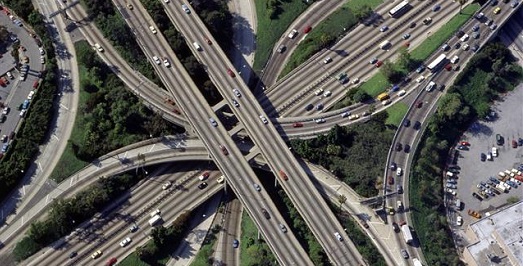By Ben Rand, Manager of Content Marketing
The hunger to increase mobility and reduce congestion on our roads and highways has never been greater. This will become more and more apparent to all of us over the next few months, as we head to the beach, grandma’s house and other getaways after a long and harsh winter. The upcoming Memorial Day weekend marks the beginning of the summer travel season – and that means people are hitting the road.
AAA predicts that more than 88 percent of the 33 million holiday travelers in the United States will drive to their destination this year, a 5.3 percent increase from 2014. This marks the highest volume of travelers by car since 2005.
This resurgence in the car as a preferred means of travel comes as the roads get busier and busier. Last year, U.S. drivers covered almost 3.1 trillion vehicle miles – the most since 2007, which was the cusp of the worst global economic crisis since the Great Depression.
The increases in volume demand new and different technological solutions, many of which may be transparent on your journeys from here to there. Automated toll collection keeps you moving on the highway. Better enforcement opens up high-occupancy lanes. Apps based on data analytics find you a downtown parking spot in record time. And there is more to come.
Los Angeles Takes a Swipe at Traffic Congestion
Here at Xerox, we take traffic congestion seriously. Nobody has the time (or desire) to sit in the car idling on the highway, or wasting time circling the block for an open parking space upon arrival.
Estimates suggest that as much as 30 percent of urban traffic consists of cars looking for parking spaces. The LA ExpressPark project – a collaboration between Xerox and the Los Angeles Department of Transportation – addressed the problem in an innovative way through the use of demand-based pricing and real-time parking guidance. The idea is to maximize the availability of parking spots and make it easier for drivers to find spaces at a price that fits their needs. The results have been stark: parking rates fell and congestion decreased — but revenue increased.
Like many large cities, Los Angeles also has heavily congested highways. Xerox has worked with the city to implement High Occupancy Vehicle (HOV) lanes on two of their busiest interstates.
Portions of Interstate 10 and Interstate 110 were converted from “car pool” (or HOV) lanes to ExpressLanes – also called High Occupancy Toll (HOT) lanes.
HOT lanes allow people driving alone to travel in existing car pool lanes for a toll. This plan helps manage traffic volumes and reduce highway congestion by varying the toll rates for single passenger vehicles based on traffic levels.
Cities are breathing new life into their existing infrastructures. Unique algorithms that crunch various data, such as highway speeds and time of day, help manage transportation functions — such as parking and highway lanes.
Safe travels this holiday weekend. And remember: Get a head start!
Subscribe to this blog and receive email updates when we publish a new article.
